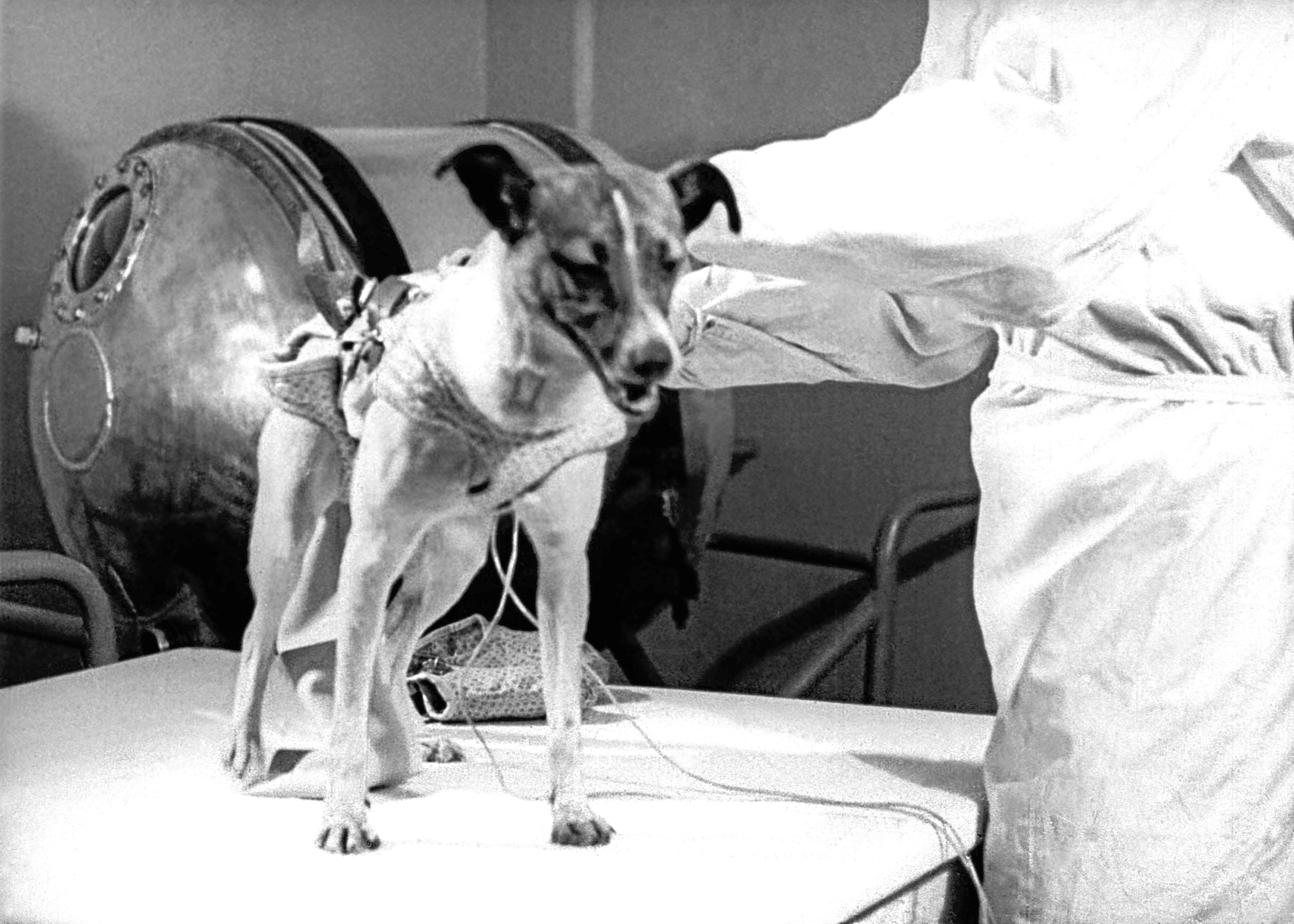
THERE have always been conspiracy theories regarding the death of Yuri Gagarin.
Was the first man in space killed in a plane crash because he’d become too popular with the Soviet people?
And it turns out the Kremlin was economical with the truth regarding the fate of one of Gagarin’s predecessors in orbit — the canine cosmonaut Laika.
On November 3, 1957, the little mongrel became the first animal to orbit the Earth aboard Sputnik 2 as scientists investigated whether a living creature could survive blast-off and microgravity.
They chose to use Moscow strays as it was assumed such animals had already learned to endure conditions of extreme cold and hunger.
The technology to “de-orbit” a spacecraft had yet to be developed, so it was very much a one-way mission and Laika was never expected to survive.
One of the boffins took her home to play with his children, admitting: “Laika was quiet and charming. I wanted to do something nice for her as she had so little time left to live.”
And a technician preparing the capsule for lift-off said: “After placing Laika in the container and before closing the hatch, we kissed her nose and wished her bon voyage, knowing that she would not survive the flight.”
It was announced by the Soviet regime that the dog had been euthanised by deliberately poisoned food before her oxygen ran out, though they quickly changed their story to claim she’d died from oxygen depletion on day six of the flight.
However, in 1999, several Russian sources — including scientists from the Sputnik programme — revealed that because the satellite had failed to separate from its rocket booster, the heating control system had failed.
Their passenger had in fact died from overheating when the cabin reached 104°F on its fourth orbit, with no signs of life after five to seven hours into the mission.
At the time in the UK, the National Canine Defence League called on dog owners to observe a minute’s silence and the RSPCA received protests even before Radio Moscow had finished announcing the launch.
Animal rights protestors demonstrated outside several Soviet embassies.
But because of the Cold War and the Space Race, the ethical issues of sending animals to their death were largely ignored in the USSR.
Only in 1998 did Oleg Gazenko, one of the scientists involved, say: “Working with animals is a source of suffering to all of us.
“We treat them like babies who cannot speak. The more time passes, the more I’m sorry about it. We shouldn’t have done it. We did not learn enough from this mission to justify the death of the dog.”

Enjoy the convenience of having The Sunday Post delivered as a digital ePaper straight to your smartphone, tablet or computer.
Subscribe for only £5.49 a month and enjoy all the benefits of the printed paper as a digital replica.
Subscribe